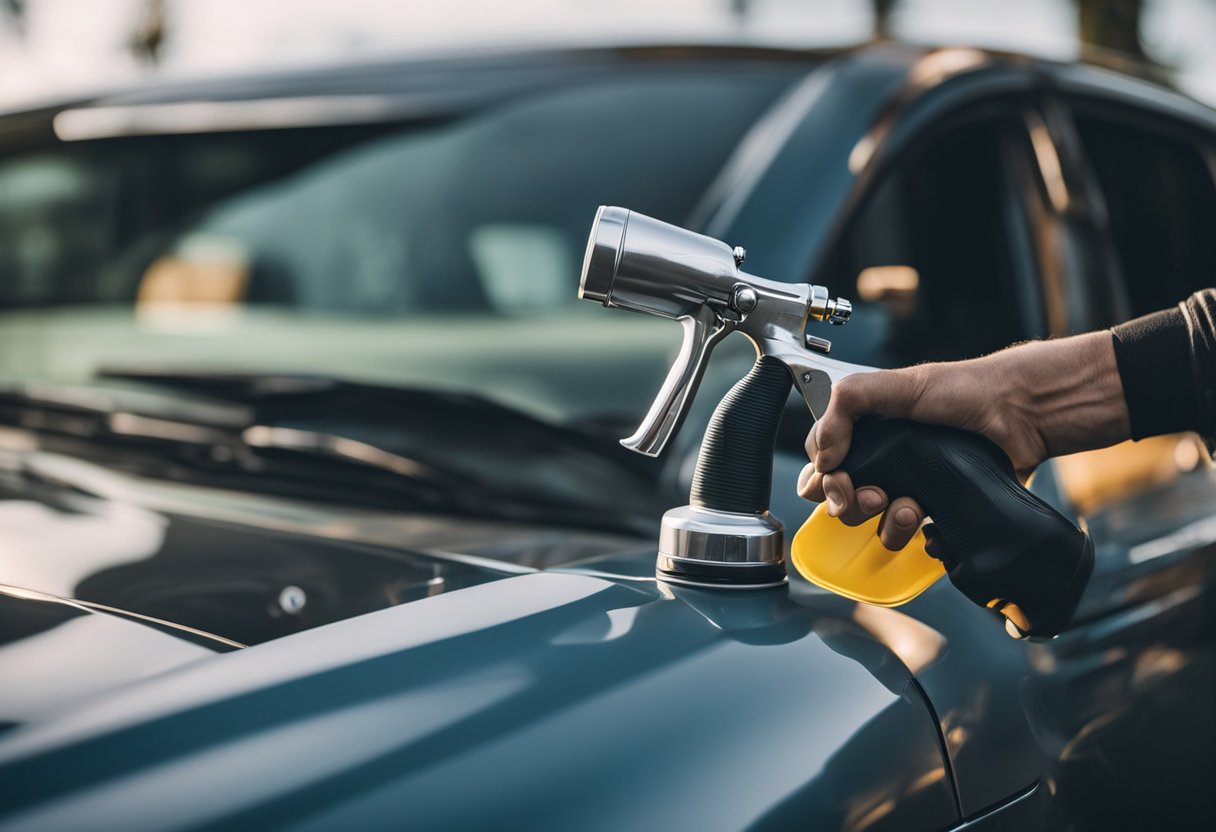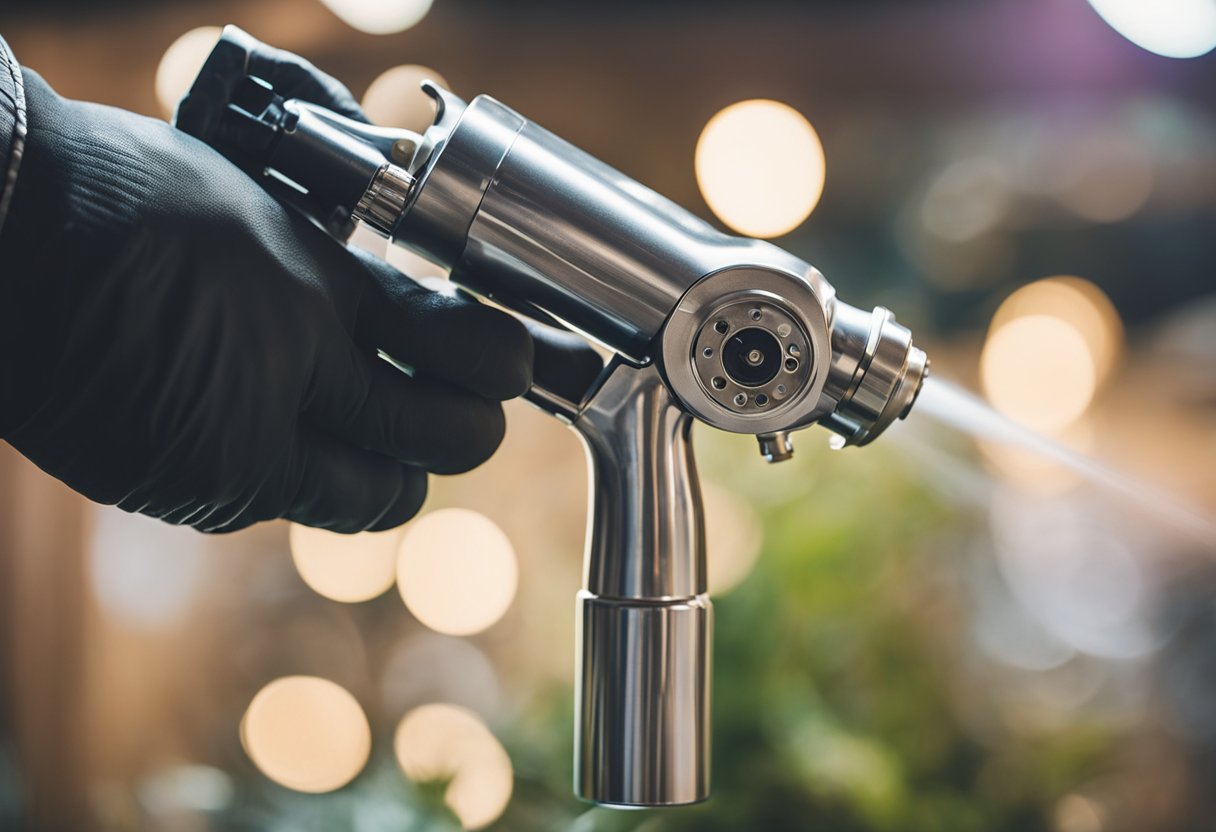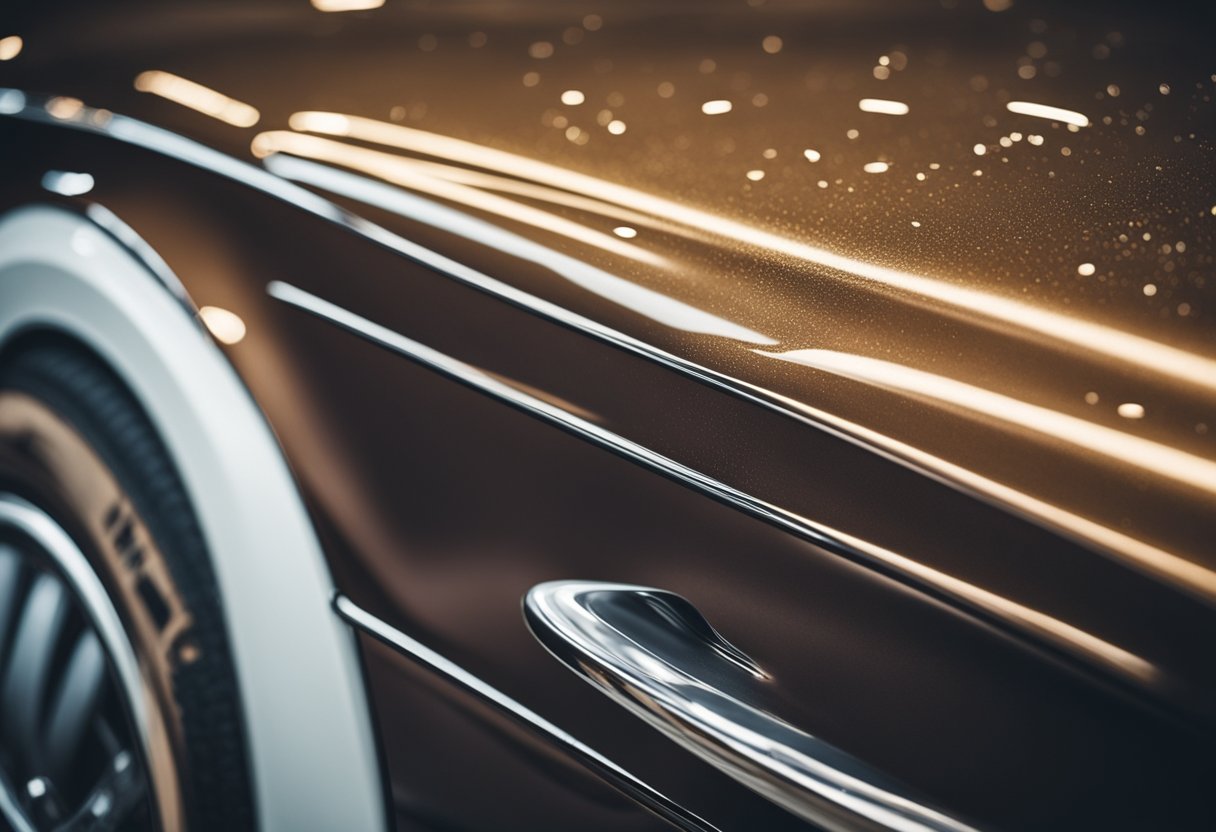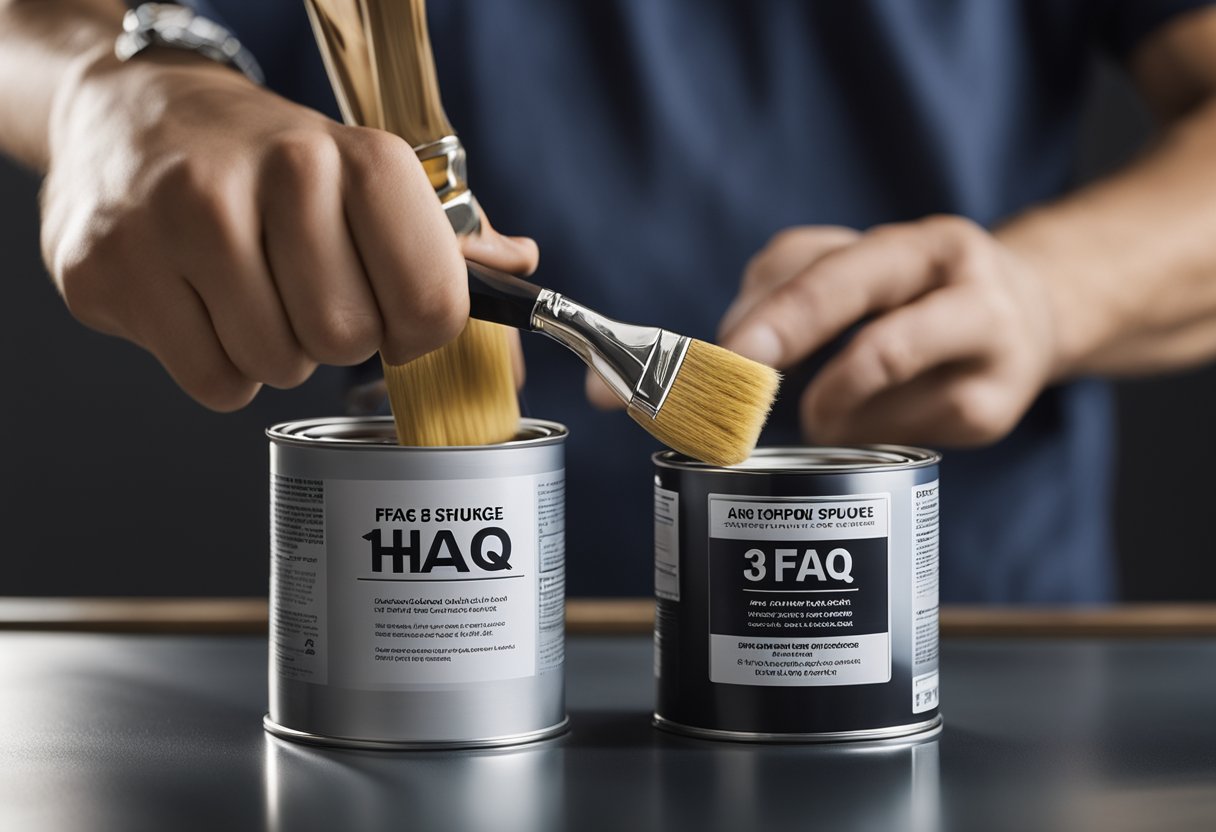As a car owner, you want your vehicle to look its best at all times. One of the ways to achieve this is by using single-stage paint, which is a type of paint that combines the basecoat and clearcoat into one layer. But can you clear coat single stage paint? The answer is yes, you can, and it can offer several benefits.
Clear coating single stage paint can provide additional protection against UV rays, chemicals, and weathering. It can also give the paint a deeper, more reflective shine. However, there are some important factors to consider before doing so. Applying a clear coat to single stage paint requires careful preparation and application, and the results may vary depending on the quality of the products used and the skill of the person doing the work.
Key Takeaways
- Clear coating single stage paint can provide additional protection and a deeper, more reflective shine.
- Applying a clear coat requires careful preparation and application, and the results may vary.
- It is important to consider the quality of the products used and the skill of the person doing the work.
Understanding Single Stage Paint
As a DIY car enthusiast, it is essential to understand the basics of single stage paint. Single stage paint is a type of automotive paint that combines the base paint and clear coat in a single application. This means that the gloss and color are mixed together, making it easier and faster to apply than a base coat/clear coat system.
Single stage paint is a popular choice among car enthusiasts because it is more affordable than a base coat/clear coat system. It is also easier to apply and provides a good level of protection against the elements. However, it is important to note that single stage paint does not provide the same level of protection as a base coat/clear coat system.
When it comes to gloss, single stage paint provides a good level of gloss. However, if you want a higher level of gloss, you can add a layer of clear coat over the single stage paint. This will provide extra shine and protection over the single-stage paint.
One of the benefits of single stage paint is that it is easy to repair. If there are any scratches or chips in the paint, you can easily touch it up without having to worry about matching the clear coat.
In summary, single stage paint is a popular choice among DIY car enthusiasts. It is affordable, easy to apply, and provides a good level of protection against the elements. While it does not provide the same level of protection as a base coat/clear coat system, it is still a great option for those on a budget. If you want a higher level of gloss, you can add a layer of clear coat over the single stage paint.
The Role of Clear Coat
https://www.youtube.com/watch?v=ovSenNzorcE&embed=true
Clear coat is a transparent layer of paint that is applied on top of the base coat. The clear coat is responsible for providing a glossy finish to the car’s surface. It is also responsible for protecting the base coat from UV rays and other environmental factors that can damage the paint.
When it comes to single-stage paint, there is no need to add a clear coat because the clear and color are already mixed. However, adding a layer of clear coat can provide extra protection and enhance the glossiness of the paint. The clear coat layer fills in any imperfections in the single-stage paint, creating a smooth surface that reflects light more evenly.
The clear coat also provides UV protection to the base coat. UV rays can cause the paint to fade and lose its shine over time. The clear coat acts as a barrier between the base coat and the sun’s harmful rays, ensuring that the paint remains vibrant and glossy for longer.
Overall, the role of clear coat in single-stage paint is to provide an extra layer of protection and enhance the glossiness of the paint. While it is not necessary to add a clear coat to single-stage paint, doing so can provide additional benefits that can help keep your car looking great for years to come.
Applying Clear Coat on Single Stage Paint
https://www.youtube.com/watch?v=ObuVtFzTL5A&embed=true
As a professional painter, I have been asked numerous times if it’s possible to apply clear coat on single stage paint. The answer is yes, and it can be done to achieve a more uniform shine and added protection.
Before applying clear coat, it’s important to ensure that the single stage paint is fully cured. This usually takes around 30 days, but it’s always best to check the manufacturer’s recommendation.
To apply clear coat, you will need a spray gun, and it’s important to have experience and skill when using one. The clear coat should be mixed according to the manufacturer’s instructions, and it’s important to sand the surface of the single stage paint to ensure proper adhesion.
When applying the clear coat, it’s important to do so in a controlled environment to avoid any dust or debris from settling on the surface. It’s also important to apply the clear coat evenly, using overlapping strokes to avoid any streaks or drips.
Overall, applying clear coat on single stage paint can be done to achieve a more uniform shine and added protection. However, it’s important to ensure that the single stage paint is fully cured and to have the necessary experience and skill when using a spray gun.
Benefits of Clear Coating Single Stage Paint
https://www.youtube.com/watch?v=Ee0B7_soVgc&embed=true
Clear coating single stage paint provides a number of benefits that make it a worthwhile investment for car owners. Here are some of the advantages of clear coating single stage paint:
Durability
Clear coating single stage paint can improve the durability of the paint job. The clear coat provides an extra layer of protection against scratches, chips, and other types of damage. This can help the paint job last longer, which can save you money in the long run.
Gloss and Shine
Clear coating single stage paint can also improve the gloss and shine of the paint job. The clear coat provides a smooth, glossy finish that can make your car look like new. This can be especially beneficial if you have an older car that has lost some of its shine over time.
Protection
Clear coating single stage paint can protect the underlying paint from UV rays, which can cause fading and discoloration over time. The clear coat can also protect the paint from environmental factors such as dirt, dust, and debris.
Depth
Clear coating single stage paint can add depth to the paint job. The clear coat creates a layer of depth that can make the color of the paint look richer and more vibrant.
Advantages
Clear coating single stage paint has several advantages over other types of paint jobs. For example, single stage paint is easier and faster to apply than a base coat/clear coat system. This means that you can get your car back on the road sooner.
In addition, clear coating single stage paint is more affordable than a base coat/clear coat system. This can be a major advantage if you are on a tight budget.
Overall, clear coating single stage paint is a great investment for car owners who want to improve the durability, gloss, and protection of their paint job. It is also a more affordable and faster option than a base coat/clear coat system.
Drawbacks of Clear Coating Single Stage Paint
As with any automotive painting technique, there are pros and cons to using single stage paint. Here are some of the drawbacks of clear coating single stage paint:
Cost
Clear coating single stage paint can be expensive. You will need to purchase additional materials such as the clear coat, hardener, and reducer. This can add up quickly, especially if you are working on a larger project.
Disadvantages
While clear coating single stage paint can provide an extra layer of protection, it can also have some disadvantages. For example, it can be more difficult to repair a clear coat than it is to repair single stage paint. Additionally, if the clear coat is not applied correctly, it can peel or crack, leaving your paint job looking worse than before.
Runs
Clear coating single stage paint can also be prone to runs. This is because the clear coat is a thicker material than the single stage paint, and it can be more difficult to apply evenly. If you are not careful, you may end up with unsightly runs in your clear coat.
Imperfections
Finally, clear coating single stage paint can highlight imperfections in the paint job. If there are any scratches, dents, or other imperfections in the single stage paint, the clear coat will make them more visible. This can be frustrating if you were hoping to achieve a flawless finish.
Overall, clear coating single stage paint can be a good option if you are looking for added protection and glossiness. However, it is important to be aware of the potential drawbacks before you start your project. Keep in mind the cost, disadvantages, runs, and imperfections that can arise when clear coating single stage paint.
Comparing Single Stage Paint to Two-Stage Paint
https://www.youtube.com/watch?v=B98tZ0fhVbs&embed=true
As the name suggests, single-stage paint is a type of paint that is applied in one stage, whereas two-stage paint is applied in two stages. Two-stage paint consists of a base coat, which provides color, and a clear coat, which provides gloss and protection. In contrast, single-stage paint combines color and gloss in one layer.
One of the advantages of single-stage paint is that it is cheaper and easier to apply than two-stage paint. Single-stage paint is also less prone to oxidation than two-stage paint, which means that it is less likely to fade or lose its shine over time.
However, two-stage paint offers several advantages over single-stage paint. For one, two-stage paint provides a greater range of color options than single-stage paint. Two-stage paint also provides a deeper, richer color and a higher gloss finish than single-stage paint. Additionally, two-stage paint is more durable than single-stage paint because the clear coat provides an extra layer of protection against scratches, chips, and other damage.
In summary, while single-stage paint is a good choice for those on a budget or who want a simpler painting process, two-stage paint offers greater color options, a deeper color and gloss, and better durability. When deciding which type of paint to use, it is important to consider your budget, desired color and gloss, and the level of protection you need for your paint job.
Preserving Your Clear Coated Single Stage Paint
https://www.youtube.com/watch?v=ZruDRjQFvTk&embed=true
As someone who has invested time and money into getting a clear coated single stage paint job, you want to make sure that it lasts as long as possible. Fortunately, there are a few things you can do to preserve your paint and keep it looking great for years to come.
Regular Maintenance
The first thing to keep in mind is that regular maintenance is key. This means washing your car on a regular basis to remove any dirt, dust, or debris that can scratch the surface of your paint. When washing your car, be sure to use a soft sponge or cloth and a gentle soap that won’t damage your paint. Avoid using abrasive cleaners or scrubbing too hard, as this can cause scratches or swirl marks.
Protecting Your Paint
Another way to preserve your clear coated single stage paint is to protect it from the elements. This means parking your car in a garage or carport whenever possible to shield it from the sun, rain, and other environmental factors that can cause damage. If you don’t have access to a covered parking spot, consider using a car cover to protect your paint when you’re not driving.
Avoiding Chemicals
It’s also important to be careful about the chemicals you use on your car. Some chemicals, such as harsh cleaning agents or gasoline, can damage your paint and cause it to fade or peel. If you need to use chemicals to clean your car, be sure to choose products that are specifically designed for use on automotive paint and follow the instructions carefully.
Dealing with Scratches
Finally, if you do notice scratches or other damage to your clear coated single stage paint, it’s important to address the issue as soon as possible. Leaving scratches untreated can cause them to get worse over time, which can lead to more serious damage. If you’re not sure how to fix a scratch or other issue with your paint, it’s best to consult with a professional who can help you determine the best course of action.
By following these tips and taking good care of your clear coated single stage paint, you can enjoy a beautiful and long-lasting finish that will make your car look great for years to come.
Frequently Asked Questions
How do you prep single stage paint for clear coat?
Before applying a clear coat to single stage paint, it is important to properly prep the surface. This involves thoroughly cleaning the surface to remove any dirt, grease, or wax buildup. Next, you will need to sand the surface with a fine-grit sandpaper to create a smooth surface for the clear coat to adhere to. After sanding, wipe the surface clean with a tack cloth to remove any dust or debris.
Can you apply clear coat over old paint?
Yes, it is possible to apply clear coat over old paint. However, it is important to ensure that the old paint is in good condition and has been properly prepped before applying the clear coat. Any imperfections in the old paint will be visible through the clear coat, so it is important to thoroughly inspect the surface before proceeding.
Can you clear coat metallic paint?
Yes, it is possible to clear coat metallic paint. However, it is important to ensure that the metallic flakes are evenly distributed throughout the paint before applying the clear coat. If the flakes are not evenly distributed, the clear coat may appear blotchy or uneven.
Can you wet sand and buff single stage urethane paint?
Yes, it is possible to wet sand and buff single stage urethane paint. However, it is important to wait at least 24 hours after painting before wet sanding or buffing. This will give the paint time to fully cure and harden. When wet sanding, use a fine-grit sandpaper and plenty of water to create a smooth surface. When buffing, use a polishing compound and a soft cloth to bring out the shine in the paint.
How long does single stage paint last?
Single stage paint can last for many years if properly maintained. However, the lifespan of the paint will depend on a variety of factors, including the quality of the paint, how well it was applied, and how well it is cared for. Regular washing and waxing can help protect the paint and extend its lifespan.
Can you add metal flake to single stage paint?
Yes, it is possible to add metal flake to single stage paint. However, it is important to ensure that the flakes are evenly distributed throughout the paint to avoid a blotchy or uneven appearance. It is also important to use a clear coat to protect the flakes and give the paint a glossy finish.

Hi, I’m Sal Muller of Tooltrip.com. My DIY experience led me to understand essential power tools for home projects. Tooltrip.com guides enthusiasts and professionals in choosing right tools for any job. I provide concise top tool reviews for easier, efficient DIY.





